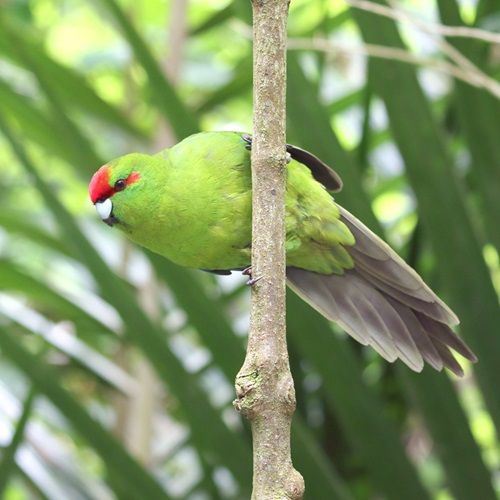Ellen Irwin is Lead Conservation Ranger at Zealandia, and she says the valley and its wildlife is getting the care and attention it deserves while being closed to the public.
But like within most organisations right now, the Covid-19 lockdown has meant staff at Zealandia have had to change the way they work. Ellen says for now, one conservation ranger and one infrastructure ranger are rostered on each day.
“But we don’t interact,” she says, “we do this dance in the morning to make sure we are not in the same area".
"We’re there to carry out the essential tasks to make sure the species in the valley are safe and well – we are making sure the fence is intact so nothing can get in, feeding some of our threatened species, and cleaning feeders and doing work like that.”
Wellington’s Zealandia is surrounded by an 8.6-kilometre metal fence that keeps predators out, providing a safe-haven for rare and endangered species. Species living at the ecosanctuary include kiwi, spotted skinks, and giant wētā, as well as many native bird species such as the tītipounamu (rifleman), and threatened hihi (stitchbird).
READ MORE:
Working to keep our coastline beautiful
Arborist saves the day for two nurses
Working for Wellington under lockdown
Originally from the United States, Ellen moved to New Zealand about five years ago to further her university studies in ecology and biodiversity. She carried out her master’s degree project while volunteering at Zealandia, eventually joining the staff and working her way up into her current role as Lead Conservation Ranger.
“Our team is trying to protect the flora and fauna of the valley. That involves both monitoring the species that are in here and also making sure they have a safe space to thrive by keeping predators out.”
She says it’s a great place to work, where no two days are the same.
“My job is super varied which is awesome. All within the span of a day, I could be checking some nest boxes, checking a trap line, and doing data analysis or writing a report. It’s hard to describe a typical day because every day is so different and we are constantly learning.”
Ellen also runs Zealandia’s kākāriki (red-crowned parakeet) monitoring programme. It was these ‘at risk’ birds, which are only found in New Zealand, that brought Ellen to Zealandia as a volunteer as part of her tertiary studies.

“For my thesis project I tracked juvenile kākāriki from Zealandia to see if they were leaving the sanctuary – and if they were leaving – where were they going? Were they surviving when they left the valley? Why were some going really far and some sticking close to home?
“It was a really cool project. I ended up radio tracking 22 birds, so there was lots of wandering around Wellington suburbs with a big blue antenna.”
Ellen says she feels “super lucky” to be working fulltime at Zealandia.
“I’ve been interested in conservation pretty much since I could talk. I was drawing endangered species and watching Animal Planet. I’d record shows about the rainforest onto a VCR cassette and then watch it over and over and over again – I was pretty obsessed from a young age.”